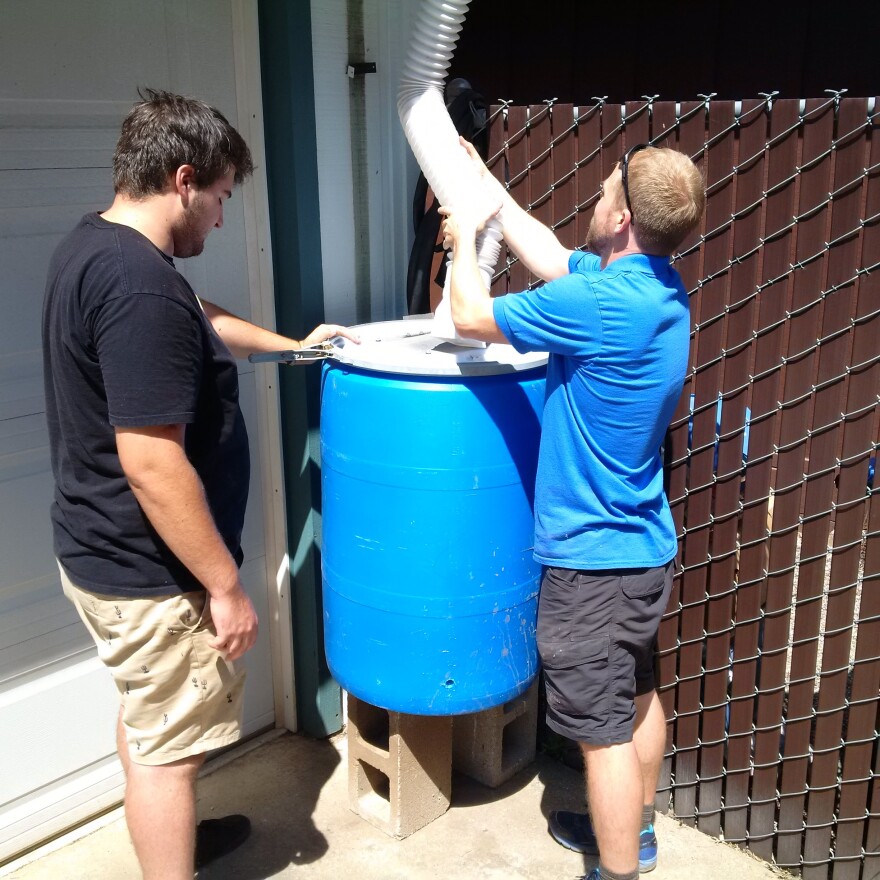In arid California, seasonal drought is a way of life. Water is both scarce and in high demand. People are told to conserve. Agriculture looks for efficiency through technique and technology. Officials slowly conjure money to expand reservoirs. Though closer to reality than ever, the long-awaited Sites and Temperance Flat reservoirs are probably still decades away. Nevertheless, far more modest projects — ones that could be completed in a single morning — may have a strong supporting role in California’s water future.
For most Californians, the state’s water wars are a spectator sport. You can conserve, but on big issues—pumping, tunnels, flow rates, reservoir construction, aquifer recharge, endangered species—there’s little to do beyond monitoring the latest turn of the wheel on dozens of lawsuits.
It turns out, however, that there are ways to directly participate in easing California’s perpetual water shortages. It takes a few supplies, a handful of tools, some resourcefulness and a little elbow grease.
On a recent Saturday, three staffers with the Butte Environmental Council were demonstrating how to build a simple contraption to harvest the rain.
Natalie Carter is BEC’s executive director.
“If every house had a couple of rain barrels collecting 50 or 60 gallons every time it rained, that adds up fast,” she said “There’s a lot of water that gets saved to be used right there in your own yard.”
Illegal in California before 2012, rain barrels aren’t going to save the Delta Smelt, spring run salmon or next year’s almond crop. But they can irrigate gardens, reduce water bills and reduce loads on sewage plants. If adopted widely enough, the water saved becomes a lot more than a few drops in the proverbial bucket.
According to author and rain barrel promoter Brad Lancaster, an inch of rain falling on a thousand square feet of roof can yield 625 gallons of water. Capturing every drop though requires a series of connected barrels.
Jeremy Jenson is BEC’s Watershed Program coordinator.
“In the cities where it’s mostly cement and roofing and whatever, the water falls and then it just drains and leaves,” Jenson says. “If your gutters are set right, if you’re putting it in the right spot, you can easily much fill up a 55 gallon bucket any time it rains.”
As the sun slowly gains height, Jenson and Zephyr Nebel are cutting pilot holes into a big blue plastic drum.
The broader concept of rain barrels has its critics.
Jay Lund, director of the Center for Watershed Sciences at UC Davis, ran the numbers and found rain barrel systems prohibitively costly. According to Lund, barrel-saved water costs five to ten times the price of desalinized seawater—which itself is barely economical.
Lund assumes barrels would only be filled and emptied just one to three times a year. Now, your results may vary — but Redding, for example, receives just more than thirty four and a half inches of rain in an average year. Lund also expects rain barrel systems to cost about one hundred dollars.
In the North State, though, where agricultural processing is an economic mainstay, barrels can be obtained on the cheap.

“There are ways to even to get these barrels free if you look hard enough and are patient a little bit, so it could be a pretty low-cost project if you’re a little resourceful,” Carter said.
The barrels gathered for the demonstration project were procured from several different sources. Mainly from local small olive oil producers and from the big Smucker’s plant in Chico. Made of thick food grade plastic, health regulations require the barrels to be quickly retired.
“I would say three necessary components for rain barrel,” Jenson said. “One, of course, is your entry point which you keep debris and mosquitoes out, the other is your spigot near the bottom to allow the water to come out.”
And the third, involves positioning — elevating the barrel to use gravity to create water pressure.
After drilling holes, Jenson and Nebel quickly tackle one of the most important aspects of construction.
“What we’ll need to do here is cover this up with a screen,” Jenson said. “Oftentimes what will work best is screen from old window screening, which is what we have.”
Next comes the hose bib — in this case, a brass faucet. It’s installed about half a foot off the bottom, making it much easier to move the barrel and clean it.
Nebel and Jenson then partly disassemble the rain gutter and attach flexible plastic accordion hose leading into the top of the barrel. A few cinderblocks are arranged as a stand. Once the barrel’s partly full, the height creates enough pressure to propel water down a hose.
While far from a panacea for California’s water problems, and hardly a replacement for new reservoirs, Carter likens their potential to that of rooftop solar.
“If you get people putting up rain barrels and solar panels, we’ll do it one house at a time,” Carter said.


